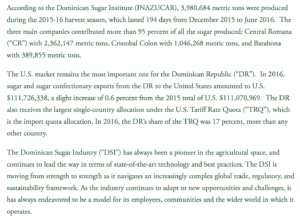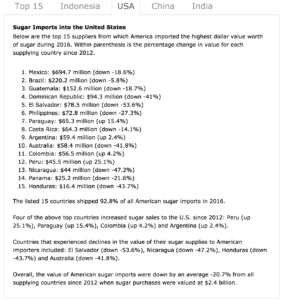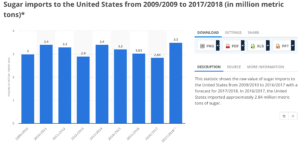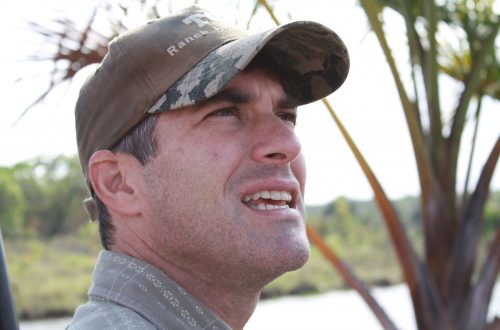Haitian Human Trafficking Connection to U.S.
“Human trafficking is a modern form of the oldest and most barbaric type of exploitation. It has no place in our world.” – President Trump
I cannot agree more Mr. President.
The 2007 documentary The Price of Sugar, narrated by Paul Newman, exposed how Haitians are lured into indentured servitude on sugar plantations in the Dominican Republic, never to return home. They can barely feed themselves or their families and their documents are stripped upon arrival so they can never leave the plantation. Cutting cane by machete, they work 14 hour days, 7 days a week, frequently without access to decent housing, electricity, clean water, education, healthcare or adequate nutrition. Instead of cash, they are paid in vouchers that can be redeemed for overpriced food at company-owned stores on the plantation. Since they can only afford one meal a day, most of the calories they consume come from chewing sugar cane and they suffer malnutrition. Aside from the Vicini family owning the Dominican Republic with a couple of other “elite families”, what allows this business to thrive and be so lucrative?
The Obama administration implemented a deal whereby the U.S. is paying the largest tariff rate on imported sugar at 85% to the Dominican Republic, and they are receiving the largest single-country allocation under the U.S. Tariff Rate Quota (TRQ) on imports. Translation: The Dominican Republic relies on the U.S. more than any other country for it’s sugar production, while receiving a sweet 85% tariff out the gate. The Dominican Republic is the fourth largest importer of sugar to the United States of America. This was a phase out plan that wraps up in 2020 when the tariff rate reduces to zero.
Why did the Obama Administration single out the Dominican Republic and extend such a substantial deal to them? Was there pay-to-play action involved? Why are we going above and beyond to continually support the trafficking and slavery of humans? If they rely so strongly on the U.S., shouldn’t routine inspections be done to be certain these people are earning what they deserve, are fed, are sheltered, have medical staff, and above all be allowed to leave WITH their papers they arrived with?

“As the industry continues to adapt to new opportunities and challenges, it has always endeavored to be a model for its employees, communities and the wider world in which it operates.”
Did they really just make that claim?

As you can see in the charts above, the sugar industry relies heavily on weather conditions and rainfall. In 2016 most countries were down, however, in 2017/2018 it was forecasted to return to higher yields. The United States is the only major export market for Dominican Republic sugar. Americans are the largest consumers of sugar, consuming an estimated 83 pounds per person per year. Staggering, right? In 2016 the Dominican Republic received $94.3 million from the U.S. in sugar sales. There is a lot of money in the sugar industry.
Equal Times did a follow up report in 2015 on some of the retired employees of the plantations. Here is just one story of many similar stories:
Leonor Mesille has spent most of his life bent over cutting sugar cane.
In 1947, he left Haiti for the Dominican Republic seeking food, money and opportunity. He ended up earning US $50 a month working on a plantation that exported most of its sugar to the United States.
At 71, he lives in a modest wooden structure with a tin roof. He has no retirement savings.
Over the past 19 years, Mesille has submitted the required paperwork on three separate occasions to collect his pension, which he says is owed to him for the 56 years paid into the social security system, a majority of which was spent working for Central Romana company.
Mesille said if he was granted a pension, he would collect an estimated US $100 per month, enough for food and access to healthcare. He blames government bureaucracy.
Between 8,000 and 10,000 sugar cane workers, the majority of which are Haitian immigrants, are still waiting for their pensions in the Dominican Republic, according to the Scalabriniana Association for the Service of Human Mobility, ASCALA, a local human rights organisation that focuses on immigrant rights, and the National Commission for Human Rights, CNDH.
Many are undereducated, undocumented immigrants struggling to navigate government bureaucracy, well-known for out-dated record-keeping. Others have struggled to prove that they are eligible for a pension because, like Mesille, they worked most of their lives undocumented.
The pension process paints a picture of the confusing way in which the Dominican system works, especially for Haitian immigrants.
On a recent afternoon, he recalled how he left his home five decades ago without saying goodbye to his family. “I thought I would come back after working and making lots of money and tell them then,” he said.
He never imagined he’d be sitting in his home counting beans for his next meal, hoping someone would bring him more food.
Labour activists say that many of the ageing former workers were lured to the Dominican Republic and ended up in jobs that rivalled slavery. As they’ve grown too old to work, the government has tried to deport some of them back to Haiti, but the retirees are fighting to stay in hopes that they can collect the pensions.
If you have not yet seen The Price of Sugar, I highly recommend it. The Vicini family, owners of the 250,000 acre sugar plantation shown in this documentary, take pages right out of the George Soros playbook of paying off protestors to remove the incredible Father Christopher Hartley from trying to help the Haitians. The parallels to how the elite and the MSM manage the situation to bolster their agenda is eerily familiar. It is quite an eye-opener for how slave labor is created, managed, and supported.
Human trafficking is so prevalent in these areas that a report was done back in 2004 titled “The Uses of Children: A Study of Trafficking in Haitian Children“. There have also been allegations that some of the children from Haiti were trafficked to the U.S. shortly after the major earthquake in 2010. And as recent as 2016-2017 there was a major 138% increase in Haitians flowing into Chile with the hope of finding work and safety. Just the other day, another source confirmed to me that young girls are being flown from Venezuela to the Dominican Republic, stripped of their papers, and turned into sex slaves. There are people orchestrating this at the deepest levels of corruption while hiding in the shadows and turning human beings into slaves. All of this must be investigated and must be stopped! It’s barbaric!
On February 9, 2017 the President signed an Executive Order stating:
Presidential Executive Order on Enforcing Federal Law with Respect to Transnational Criminal Organizations and Preventing International Trafficking
(a) strengthen enforcement of Federal law in order to thwart transnational criminal organizations and subsidiary organizations, including criminal gangs, cartels, racketeering organizations, and other groups engaged in illicit activities that present a threat to public safety and national security and that are related to, for example:
(i) the illegal smuggling and trafficking of humans, drugs or other substances, wildlife, and weapons;
(ii) corruption, cybercrime, fraud, financial crimes, and intellectual-property theft; or
(iii) the illegal concealment or transfer of proceeds derived from such illicit activities.
On April 11, 2018 President Trump signed:
Allow States and Victims to Fight Online Sex Trafficking Act of 2017 (FOSTA), which includes the Stop Enabling Sex Traffickers Act of 2017 (SESTA)
This will give law enforcement and victims new tools to fight sex trafficking.
“We are going to do everything in our power to make sure traffickers are brought to a swift and firm justice…When we work together, we can bring safety and hope to every community across the country.” – President Trump
Mr President – I know how near and dear this topic is to your heart, and I’ve observed how you have gone above and beyond to stop human trafficking in our country. I call on you now to please take action to stop the human trafficking and slavery taking place in our allied countries we do business with. This barbaric exploitation must stop throughout our entire world for it to resolve. Oversight is required in the Dominican Republic, and the people of Haiti need our assistance from the monopoly of corruption the Clintons have manufactured and continue to run, leaving most Haitians with no work, no safety, and nowhere to turn for help.
“Human trafficking has no place in our world.”













11 Comments
Elizabeth Greene
Thanks so much for providing this article.
Corey Lynn
You are so very welcome! Thank you for reading it.
Bernard Sansaricq
Great article on human trafficking. While a bunch of heartless politicians in Haiti are filling their pockets and bank accounts with millions in stolen money …the poor people of Haiti have always been exploited and then trashed when no longer able to work. Young girls sold and used as prostitutes, hunger, homeless , diseases, Haitians have suffered and endured all the sufferings mankind have known. Even a rich president of the United States stole from them and still exploiting them as the world find excuses to look the other way. Hell is a much better place than Haiti ! When will their suffering stop? When will the sun rises for them? When?
Corey Lynn
Agreed. And just so everyone is clear, the President being referred to here is BILL CLINTON. We will continue this fight until we see action and solutions!
Brian Patterson
Thanks for the article. Any pointers on what we can do to help stop this kind of thing. This crap needs to be brought into the light and stopped. Thanks.
Corey Lynn
We need Trump and the powers that be in on this action. I am doing everything I can to get this info viral while tagging them in it. I am pretty confident they are aware of some of this and are unfortunately tied up with a lot of fires they are trying to put out at once. I will continue to put information out and hope and pray justice will be served soon and action will be taken. A lot of people are working toward this goal.
Joel Leon
Thanks for the well documented and organized paper. It’s a wake up call against human trafficking that is so obviously neglected over the years. Haiti, considering the poverty and the weakness of the institutions, is being ravaged by human traffickers silently.
Thanks for that voice you give to the victims of that barbaric practicing in Haiti and abroad.
Corey Lynn
Bless you.
Donna Rogers Raagas
I think the indentured servitude that people from poor countries are lured into other poor countries to perform for the elites needs to be publicized. However, lest we develop too much sympathy for undocumented workers in these countries because their papers have been destroyed by the modern-day slave-owners we need to remember that part of the criminal “immigrant” crisis in the U.S. is fueled by greedy American business owners who exploit the undocumented to avoid paying competitive wages and benefits.
This exploitation is despicable and needs to becondemned everywhere, including the U.S. People in poverty-stricken countries need to be taught that these practices exist, and be persuaded to avoid being lured away from their home countries with promises of jobs and cash. Humanitarian groups and exposés such as this one could go a long way toward popularizing the necessity for, and advantages of, having documentation and legal processing to enter another country. Being undocumented is a nightmare most places, and it should go back to being a nightmare in the U.S. too, if only to promote safe immigration for all who want to enter another country. Legal passports and registered admission to other countries can only increase the probability of safe transport for one’s self, as well as recorded “proof of existence and human value”.
NGOmoike
Thanks for this article. God bless you
TampaCityGirl
What I don’t understand is if so many are trafficked in the US for labor why hasn’t there been discoveries of this. Yes I’ve heard of 1 child that was used for labor in a private home in the US, but where are the rest. How do companies hide it so well?
Also if suger caine is only cut for part of the year how do they survive the whole year. I’m sure they don’t get paid. They probably let them starve to death and find more humans the next harvest.